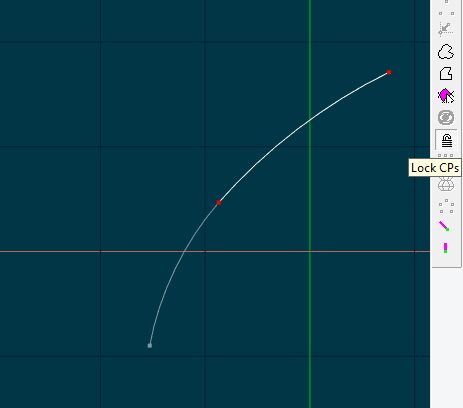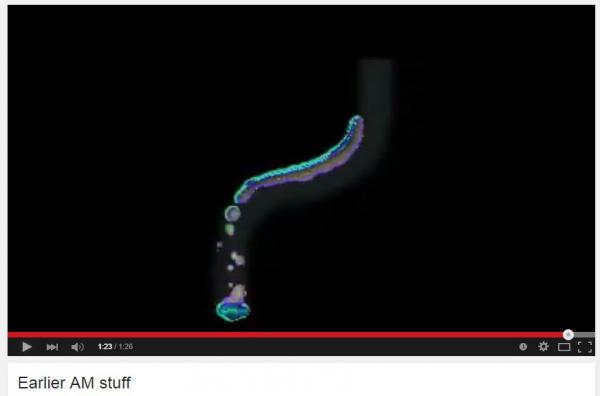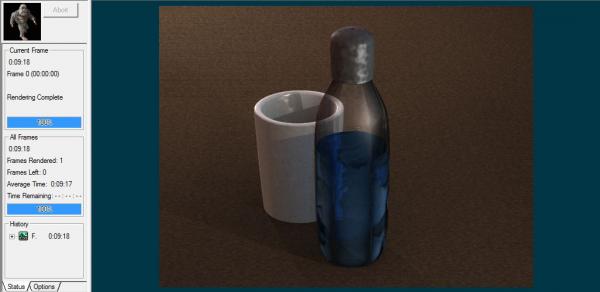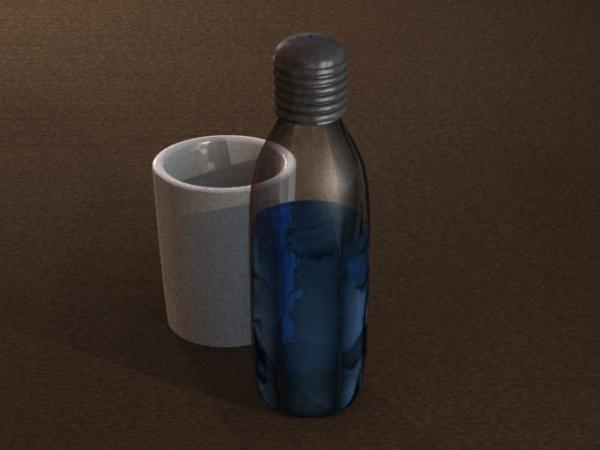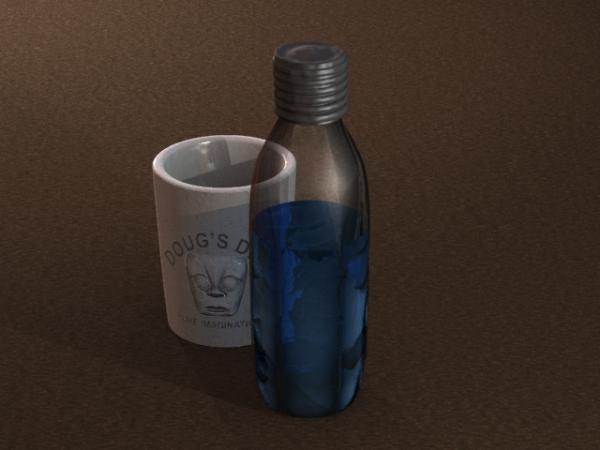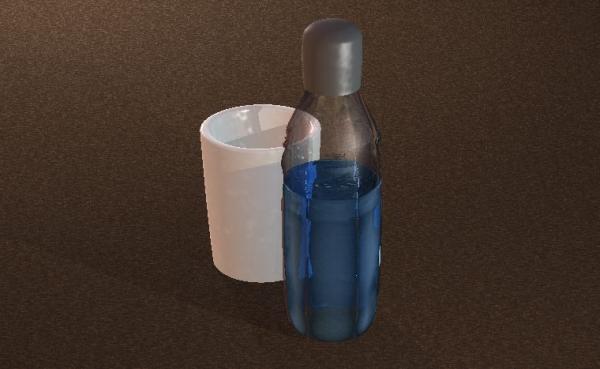-
Posts
21,649 -
Joined
-
Last visited
-
Days Won
119
Content Type
Profiles
Forums
Events
Everything posted by Rodney
-
It sounds to me like you did. To unlock Control Points look for the icon with a padlock (on the right of the screen) and deselect it.
-
Ah, the sweet smell of success! Glad to see you got it figured out.
-

found train car by kamikaze3557 and added a PS idea
Rodney replied to johnl3d's topic in Tinkering Gnome's Workshop
Hear! Hear! John's experimentation is off the charts. I'm still trying to figure out how he did this one (from the video you mention) which I assume he created with blobbies before the current fluid sim was available: -
The anime style is a captivating one. This model has a credit to Thom Falter embedded in it but it was modeled and donated to the A:M Community by Satyajit Chakraborty. Although my instinct is to fully credit Satyajit I must assume that Satyajit started from an earlier model by Thom and modified it into it's current configuration. If Thom or Satyajit stop by the forum perhaps they can clarify. When last I checked Thom had been working for ReelFX (on 'Everyone's Hero') and Satyajit was an illustration/animation instructor in India. While the rig for this character is operational it has some glitches. The model will look for the attached images for the eyes (iris) and fingernails: AnimeBoy.mdl iris.TGA nailR.TGA
-
A few things to check: - Monitor/Graphics card settings (60%) I want to say this is more in the realm of 80% but you've indicated you uninstalled and reinstalled the graphics card driver. Here I would suggest disconnecting the second monitor until such a time as the sole monitor is working properly. Once correct operation is verified of the primary monitor then add the second monitor. Assuming both monitors are not exactly of the same type it may be that the driver is good for one but not for the other (in specific modes of operation) - Control Panel\Hardware and Sound\Power Options (20%) I want to rate this higher as well as it does seem that your system is in some form of power conservation/hibernation. Easy enough to validate so when in doubt turn all power saving options off until problem is resolved. This is getting very serious. When Mahjong becomes unplayable something must needs be done. My immediate approach would be to isolate the problem by reducing variation. - Remove second monitor - Isolate problem to the graphics card/driver (if one monitor doesn't work try the other) - Address one problem at a time while reducing additional variation *Double check to ensure the current installation of Windows and the graphics card driver for current card/monitors are fully updated
-
Do you use a two monitor setup? Disregard. I see you used the plural 'monitors'. That's the first place I'd look as your system may be pushing the screen off to another location.
-
Perhaps I should have said 'secretly hoping'. And then I should have added the disclaimer: 'Any imagined events have nothing to do with the reality of transient or recurring forum visitations'.
-
One of the issues with collecting resources for the Extras has always been making sure they are up to date and fully operational. In most cases something needs to be updated in order for the resource to work in an optimal way. The talented Jim Talbot created a number of superheroes and contributed them to the community and this one is no exception. This model mostly works but could use some fine tuning attention but otherwise works quite well. JTman.mdl
-
The Country Bears movies that recently came out... haven't seen 'em. A good update of 'Robin Hood' would work well for the Adventure Land forest area. Too bad I can't get the ear of Disney planners because I think I could pitch them a pretty decent update to the Disney 'Robin Hood' mythos. 'Robin Hood' remains my favorite Disney film for a number of reasons. As for furry animals... 'Zootopia' is on the slate of upcoming movies and should give everyone all the furry animals they can stand. I will say that while Country Bear Theater wasn't where I wanted to visit as a kid... my uncle and aunt made us all sit through the Country Bears show and I recall it as a fun time with lots of humor and witty banter. I was fascinated by how they could get those animatronics to bring character performances to life right there in front of us. When visiting Tokyo Disneyland with my kids... my family all refused to go there because the other shows were considered new and exciting by comparison. They don't know what they were missing. Hmmmm.... that may be one of Christopher Walken's better performances: xhttps://www.youtube.com/watch?v=w1rkXYGK6Ls .
-
I note that some websites are up that show what kind of bad guys the Tommorow Land heroes are up against: http://www.stopplusultra.com/?page_id=21
-
Disney has always been good at the cross polination marketing thing but since about the time of the PIXAR purchase a concerted effort has been made to upgrade/update every aspect of Disney's themeparks. I recall when 'Cars' came out visiting Tokyo Disneyland and being convinced that the old go cart raceway would eventually be replaced by PIXAR Cars because what kid wouldn't want to drive around in a Lightning McQueen go cart and pretend you were actually in the movie? The same goes for any number of other older properties at the theme parks. In related news: Did you all notice that James Cameron has partnered with Disney to transport families to the world of Pandora? Is it an accident that this new part of Disney's 'Animal Kingdom' is set to arrive just in time to fall in sync with the three new Avatar sequels? http://www.wdwmagic.com/attractions/avatar/news/26feb2015-video---disney-releases-a-preview-of-some-of-the-work-taking-place-on-avatar-for-disney's-animal-kingdom.htm I'm definitely looking forward to seeing Tomorrow Land. That looks like a fun movie.
-
Thanks Matt, The timing of a lot of these 'free' releases is quite fortunate and I'm somewhat glad I'm not the one that will be deciding on which approach to take. I do want to be informed and to offer suggestions to the team and (if it becomes necessary) be able to move as painlessly as possible from one solution to another. Thus far I've mostly been look developing with A:M and doodles to allow the team to see what success might look like. I can't say that anything I've created thus far looks (to me) as it will in the final game but one has to start somewhere. Workflow-wise what I think I'm moving toward is a GO/NO GO approach where I'm hoping that the team can buy off on graphics/ideas within a quick and decisive feedback loop. The idea would be to present/pitch the product's sub-products/initial deliverables to the key decision maker(s) who would then direct the way forward by making their appropriate choice(s). I will say here that most solutions tend to be hybrids of multiple choices frin those made available; i.e. do you want to wear a red sweater today or a black sweater? Can you wear a sweater that has elements of both? While it may not be as graphically striking as the A or B proposition (nor as definitive) I would think that most people will tend to want the one with elements of both. This is something akin to my experience in the worlds of law enforcement and security. To the layman both worlds look so much the same it can be hard to tell the difference but the essential difference (at least originally) was that security is an either or proposition (i.e. step over the red line and your face is going in the dirt). This is unlike law enforcement where shades of gray dictate situation awareness with changing environments and high variation. How to live in both worlds? (A:M's solution: We can use Pose slides with either ON/OFF or percentage controls! ) It seems to me that a solution going forward is to have 1, 2 or 3 options to choose from with optional room for feedback. This would reflect my over all approach to rapid decision making (i.e intelligence) which I won't bore anyone with here. Bottom line: In order to be useful it must be a solution that can reconfigure quickly and scale when dealing with complex systems in imperfect worlds. I believe we are within one week of the team finding out if their proposal will move forward. If green lit, team leads will have to begin to decide (hopefully quickly and decisively) how to move forward by narrowing the field from all available options.
-
There appears to be two primary approaches to resolving that wish for A:M Users (not just for you but for all who would be interested in creating video games): 1. Take advantage of the gaming forum and leverage that into game building activities 2. Join a gaming community and then leverage what is learned there to build games and game based solutions The resolution is likely a combination of both approaches where folks straddle two or more communities and extend the network of knowledge of both. The difficulty is in not spreading oneself too thin and then not having time for either of those communities. It's a slow approach but this cross pollination is the underlying premise of the forums user groups/sub forums. It's a delicate balancing act and folks will come and go (so there will be inevitable seasons of disappointment) but where there is sustained interest in any particular subject matter (e.g. using Maya with A:M, Unity3D with A:M, etc.) there is room for growth. The bottom line is that as individual's we don't have time or resources to get involved in everything we'd like to explore but through the greater interests of the entire community we can peer more deeply into unknown worlds. I suppose the real question is then: Is there sufficient interest in to justify a usergroup/subforum dedicated to developing use of it with A:M?
-
I was beginning to develop a theory... in answer to the question of where several of the highly talented contributors to TWO and (more specifically) SO had disappeared to. It had something to do with a super secret third movie that remains hush hush and under non-disclosure agreement. Which would also suggest where Martin Hash himself... Okay, I'll stop there. It is very good to see you. The forum just isn't the same without you.
-
Ken! It's great to see you. You've been missed! I'll definitely check out Construct2. I don't believe I've heard of that before.
-

anyone need a spacestation..found old model
Rodney replied to johnl3d's topic in Tinkering Gnome's Workshop
Nice. I like! -
I generally use the PrtScn (Print Screen) key to capture the current screen and then use a utility to crop and save the image for easy uploading. On a PC the PrtScn key is usually above the Backspace key.** Pressing it copies an image of the screen to the Windows clipboard where it can then be pasted into any program with a (clipboard friendly) paste buffer. My personal preference as a light weight image converter is Irfanview but there are literally thousands of programs that can be used to copy/paste/save the image. You *can* use A:M's snapshot feature but more often than not (at least for me) the image saved will include wireframe/splines and control points. There are several reasons why the snapshot isn't ideal but I'd say the primary one is that they are saved to TGA format which isn't directly compatible with browsers so... you'd have to convert the image from TGA to a web friendly image format (PNG, JPG, etc.). A:M uses it's own paste buffer so I know of no way to directly copy/paste images into and out of A:M from other programs or the operating system. **I assume you are using the same method to get your images for posting here in the forum. Perhaps you are asking about something else though? Staging the camera/objects? Since we are on the subject you want to be sure to have a screen capture tool for video as well. I think you've already used Hypercam so should be familiar with that program. Any program that can capture video can usually capture still images also. Of course, A:M is a rendering program so we can get the full render quality of lights, shadows and textures by launching a render. Here's a screencap of a full render like the above but without the distortion in the bottle: I've added the project file to show there isn't anything out of the ordinary in the setup. I should note that I tend to discard the default Chor setup at every opportunity. This means deleting the three lights (lighting the scene from scratch to take advantage of objects in a scene), altering (or removing) the ground plane, and moving the camera to a different vantage point. Every scene/shot is different and the default setup is there to get you started but it will tend to make everything look generically the same and using the defaults will prevent you from getting the absolute best out of the scene/story you are wanting to tell... because the default doesn't know anything about your shot/scene, where 'real lights' are placed or where you want the focus to be... only you do. A long time ago someone passed on the tip to start lighting from a scene that is entirely dark/black (with no lights) and adding one light... then other lights as necessary. This method worked so well that I tend to use that approach whenever I set out to light a scene. I'm pretty sure this tip was formally championed for computer rendering by Jeremy Birn who is the author of the well known textbooks on Lighting and Rendering. Added: I couldn't resist adding some fake bottle top threads on the cap. I'll try to resist further tweaking. Added: One more (or actually two more) tweaks; flattened the bottle cap and added a logo to the cup. WaterbottleProject.zip
-
Answer: Materials Here's a test of materials and lighting on a water bottle. This is a screenshot prior to my last tweak... the distortion at the top is due to displacement from a logo I was going to put on the bottle but I accidentally entered some number like 55555% (I wanted to enter 5% but my keyboard had a mind of it's own) and A:M is still trying to figure out what to do with that.
-
This is reported as resolved in 18j. If you can share a project file with embedded models where the problem still persists that would be ideal.
-
Ha! Love the mailbag. I always wondered what Rodger's voice sounded like.
-
Yeah, that background... or lack of it can be a real pain. I have an approach to that that may serve other folks well too: If I know that I need to change any aspect of the Ground I will either remove it via Delete or (something I've been doing a lot more these days) I will rename the Ground model as 'Groundplane'. This gives me an immediate hint that I've altered the model and it also prevents any unnecessary concerns about overwriting the file or having it overwritten/rewritten by the default ground plane (when creating a new Project). A:M won't overwrite the Ground model but... it just makes me feel better knowing that it's not the default ground plane. Then in some cases I'll just modify the current default (going in from a Right side and lifting the back-most Control Points of the ground grid and lifting the middle ones slightly to prevent awkward passthroughs of feet etc. More often than not I'll just replace then entire ground plane or (in cases where I know I'll want to composite a background that may change later) delete the Ground and leverage the power of Alpha Channels. More info than needed but I had to do something while waiting for your fish project to appear...
-
Nice. I wasn't expecting another release so soon. Things are running nice and snappy/fast here. I don't know if it's intentional but when the render lock button is down I get a slight interuption on screen when modeling. Turning it off makes it go away. This is great because I tend to forget to turn that off and leaving it down has caused problems for me in the past. Now I have a visual reminder to turn it off. I likey. Thanks!
- 8 replies
-
- Software Update
- Download
-
(and 2 more)
Tagged with:
-
Well said.
-
Very nice!
-
I hear you Matt. I got side tracked almost 30 years ago... exactly because I knew the going was going to be rough in the cartooning trade. It's funny... in a tragic kind of way... how that way back then I could have only dreamed of having the tools that we have available to us today and the ability to collaborate with folks of like mind and interest and yet now that the tools (and skill) are almost ubiquitous and universal and the means available to everyone for pennies comparitive to the costs of old... we don't take advantage of them. There is also that thing... way back in the day fewer people were interested in pursuing such creative outlets in the first place and now... almost everyone is. When I was a teenager I couldn't find people (my age) that took cartooning and animation seriously. I had to get involved in teaching kids about comic books and animation just to see that spark of creative imagination. It was the best of times. It was the worst of times. And luckily... it still is.









